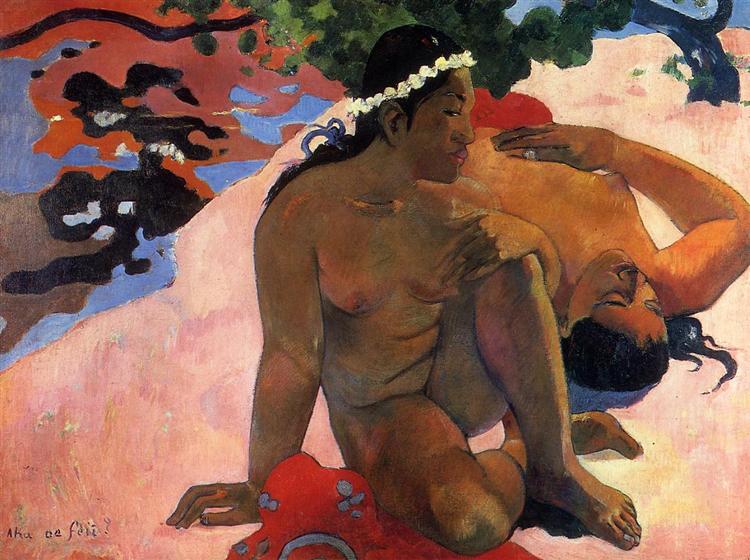Paul Gauguin, a renowned French post-impressionist artist, left an indelible mark on the art world with his vibrant and expressive paintings. Throughout his career, Gauguin delved into various subjects and artistic styles, creating a body of work that continues to captivate audiences worldwide.
This article explores different portraits of Paul Gaugin, shedding light on his artistic genius, unique style, and thematic explorations.
Vision After the Sermon(1888)
In this iconic work, Gauguin portrays a group of Breton women in prayer, their vision of Jacob wrestling with an angel appearing before them.
The painting’s striking colors, bold brushwork, and a flattened perspective create a powerful spiritual atmosphere, blurring the boundaries between reality and the world of visions.
The Yellow Christ(1889)
The Yellow Christ is a poignant depiction of a crucified Christ against a vibrant yellow background.
Gauguin’s use of expressive colors and simplified forms intensifies the emotional impact, while the unconventional composition challenges traditional religious iconography.
Tahitian Women on the Beach (1891)
Reflecting Gauguin’s time spent in Tahiti, this painting showcases two Tahitian women in a lush tropical setting.
The bold color palette and the women’s graceful poses capture the essence of the Polynesian culture, allowing viewers to immerse themselves in the exotic and idyllic ambiance of the scene.
Where Do We Come From? What Are We? Where Are We Going? (1897-1898)
Considered one of Gauguin’s masterpieces, this large-scale painting invites contemplation of life’s existential questions.
Across the canvas, a progression of figures, symbols, and inscriptions represents the stages of human existence, from birth to death. The vibrant colors and symbolic elements contribute to the painting’s profound introspection.
Mahana no atua (Day of the God) (1894)
In this captivating work, Gauguin portrays a group of Tahitian women engaged in a ceremonial dance, celebrating Polynesian mythology.
Nevermore(1897)
Gauguin’s self-portrait, “Nevermore,” captures his longing for freedom and escape from societal constraints.
With a bird perched on his shoulder, symbolizing his desire for liberation, Gauguin expresses his inner struggle and his relentless pursuit of artistic authenticity.
Spirit of the Dead Watching (1892)
One of Gauguin’s most haunting works, “Spirit of the Dead Watching” depicts a Tahitian woman lying on a bed with a ghostly figure observing her.
Through the use of intense colors, distorted perspectives, and dreamlike imagery, Gauguin explores the realms of life, death, and the supernatural.
The Siesta (1892)
“The Siesta” portrays two Tahitian women resting in a tranquil outdoor setting.
The painting’s warm hues, peaceful atmosphere, and the women’s serene expressions evoke a sense of relaxation and escape from the demands of daily life.
Te aa no areois (The Seed of the Areoi) (1892)
This vibrant painting depicts a group of Tahitian women engaged in a ceremonial dance.
Gauguin’s bold color choices, energetic brushwork, and stylized figures capture the vivacity and sensuality of the Polynesian culture, emphasizing the untamed aspects of human expression.
Fatata te Miti (By the Sea) (1892)
“Fatata te Miti” showcases a Tahitian woman sitting at the water’s edge, surrounded by lush vegetation.
Gauguin’s skillful use of color and light conveys the peacefulness and harmony between humans and nature, inviting viewers to immerse themselves in the beauty and tranquility of the scene.
Conclusion
Paul Gauguin’s 10 famous paintings provide a glimpse into his artistic brilliance, his exploration of diverse themes, and his unique style.
Through his expressive brushwork, bold colors, and symbolic imagery, Gauguin captured the essence of the exotic, the spiritual, and the untamed.
His works continue to inspire and fascinate, leaving an enduring legacy in the annals of art history.
The article contains sponsored affiliate links from Amazon to valuable resources.


